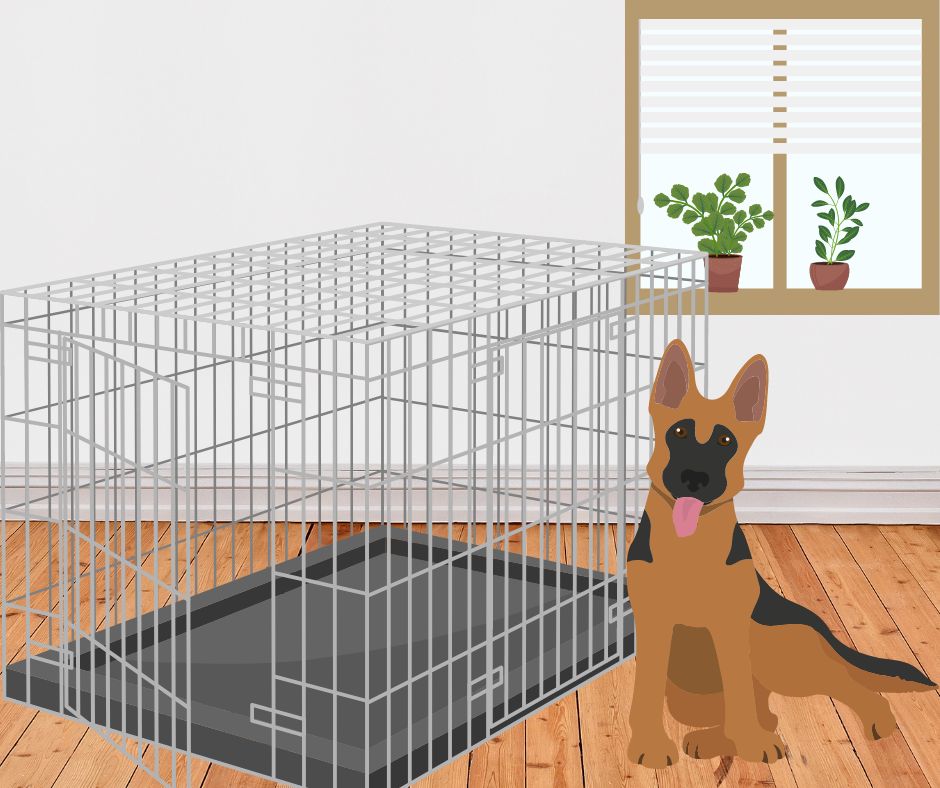Once you understand how your German Shepherd puppy sees the world you will realise that German Shepherd puppy crate training does not have to be difficult.
If you are thinking of getting a crate for your German Shepherd puppy and wondering how you are going to get them to use it then this guide is for you.
Is It Ok To Crate A German Shepherd
Yes, it’s perfectly ok to crate a Geman Shepherd. In fact here are a few reasons why it makes perfect sense that you should.
Good Reasons To Use A Dog Crate
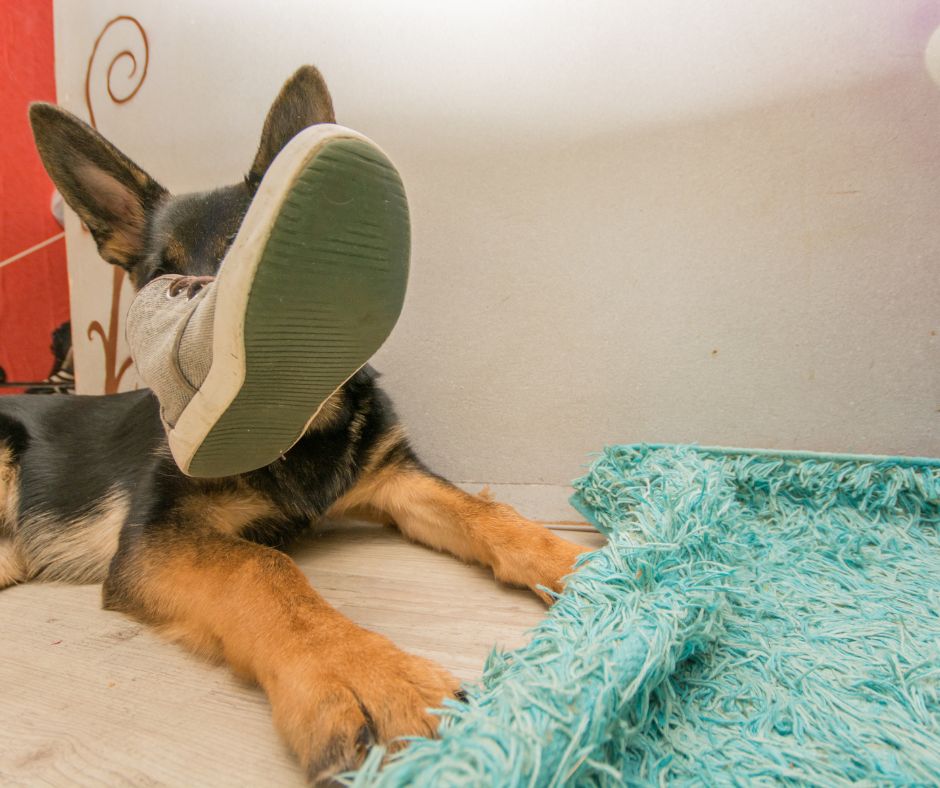
- Keeping a puppy out of danger or mischief.
- Giving a dog a space he or she can retreat to out of the way of the kids.
- Provide them with a comfortable place to relax and sleep.
- To socialise them for times when they may have to go in a kennel for example when travelling or at the vet.
When A Dog Crate Should Never Be Used
- As a punishment.
- For long periods of time (over 2 hours for a puppy – no more than 8 for an adult).
- Simply to give you a break.
A Dog Crate Is Not A Prison
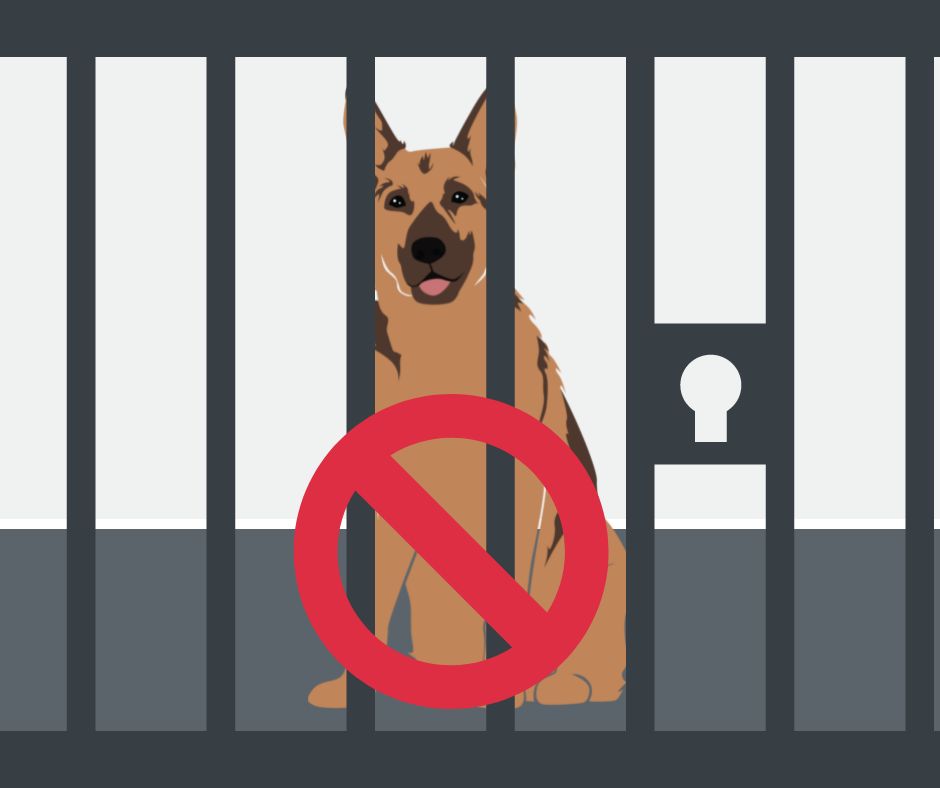
It is easy to get frustrated with your dog if they are full of energy when you least need them to be. This is particularly so if you also have young children to deal with but the crate must never be used as somewhere to put your dog out of the way.
If you lock your dog in a crate simply because you are mad or frustrated with them or leave them alone for long periods of time you will cause psychological issues.
German Shepherd Dogs are very social animals who thrive best being around you. If you deprive them of this social interaction simply because you are fed up with them they are likely to develop anxiety and depression just as a human would if forced into the same situation.
Dogs that have been over crated tend to have behavioural problems. These can be a simple reluctance to go in the crate to more destructive problems caused by boredom. They can also develop serious physical health issues from being confined to a small space or from being made to hold their bladders for too long.
Before expecting your dog to be ok with it ask yourself if you would be ok stuck in a small confined space on your own with no bathroom for that long. If the answer is no then don’t expect your dog to be ok with it either.
Are German Shepherds Easy To Crate Train
Yes, German Shepherds are easy to crate train as long as you introduce them to it in a positive way. They should be made to feel that it is an exciting, welcoming place to go. It should also be comfortable and safe. If done correctly your German Shepherd will see it as a happy place to be.
How Long Does It Take To Crate Train A German Shepherd

Your German Shepherd is very intelligent and will respond very well to positive training. Whilst each dog is different most dogs will take to it within a very short period of time sometimes straight away.
What Equipment Will You Need To Crate Train A German Shepherd Dog
A Strong Dog Crate
Any dog crate used for a German Shepherd dog will need to be strong and safe for them. It will also need to have plenty of ventilation and be of a suitable size so that it can lie down on its side.
Heavy-duty metal dog crates designed for large dog breeds are the best. The ones with soft sides are no good for German Shepherds as they are not strong enough and a puppy will just chew through them.
Also, watch out for the cheap Chinese brand ones as they tend to be flimsy and many German Sheperd dogs find it easy to break out of them.
Also, be aware that crates can take up a lot of room so it is best to get one that will collapse so you can put it away when not in use too.
What Is The Best Dog Crate Size For A German Shepherd
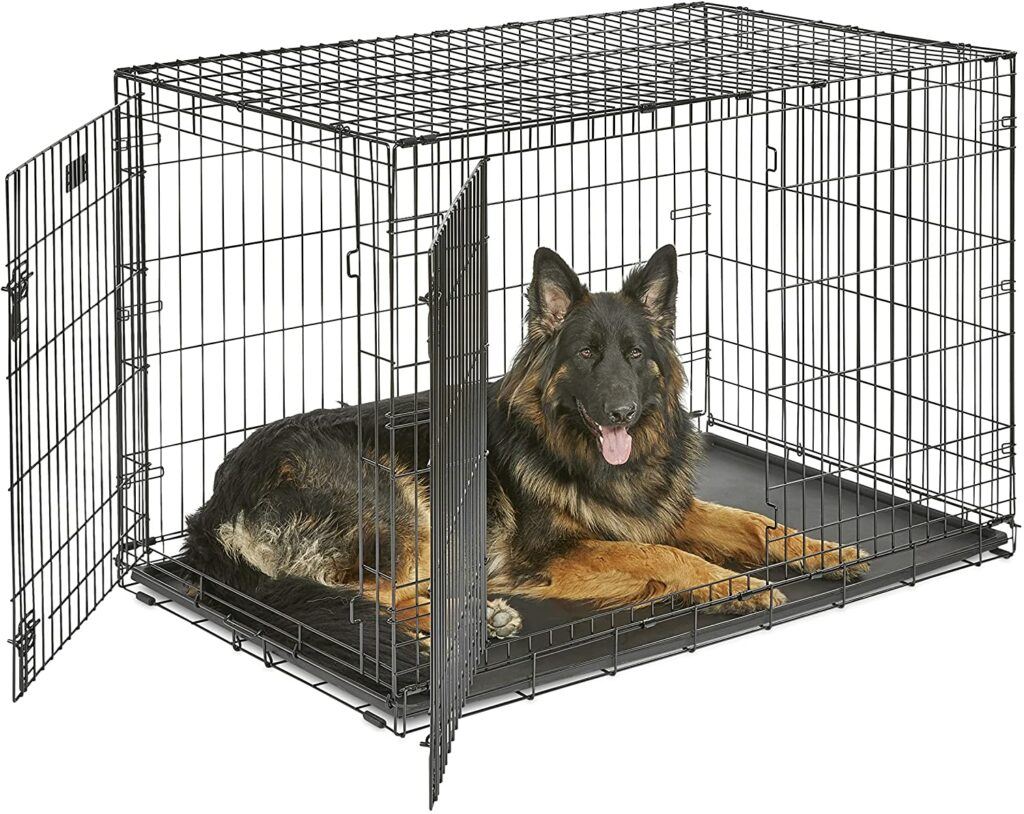
The best size Dog Crate for a German Shepherd Dog is a 48″sized one. You may be able to get away with a 42″ one for a small female but the more space the crate has the better. As I mentioned above it needs to be big enough for your dog to be able to lie down on its side as this is when the most REM sleep occurs which is necessary for your dog’s health.
They should also be able to stand up and turn around in it comfortably. So I would recommend getting a 48″ crate for both a male or a female German Shepherd to be on the safe side.
Even if you have a German Shepherd puppy at the moment you should still get a dog crate that will be big enough to accommodate them when they are fully grown. Whilst they may look lost in it at first it will only be a matter of weeks before they have doubled in size and within a few months, they will not look out of place in the crate all.
You really don’t want to be buying a new crate every few months when your puppy will do just fine in a bigger crate from day one.
The Best Crates for German Shepherds
There are a lot of dog crates on the market and they vary quite a lot in quality and price too. Whilst it’s important that you buy the right size watch out for quality too. Some of them especially the Chinese branded ones are actually not made very well which means that they are simply not sturdy enough for a German Shepherd Dog.
If the metal frame can be bent easily it won’t take an intelligent dog like the German Shepherd long to find its weak spots.
I spent quite a bit of time researching them and thought it would be helpful to document it for you in the form of a buyer’s guide to buying the best Dog Crate for A German Shepherd if you want to check it out.
A Crate Mat or Mattress
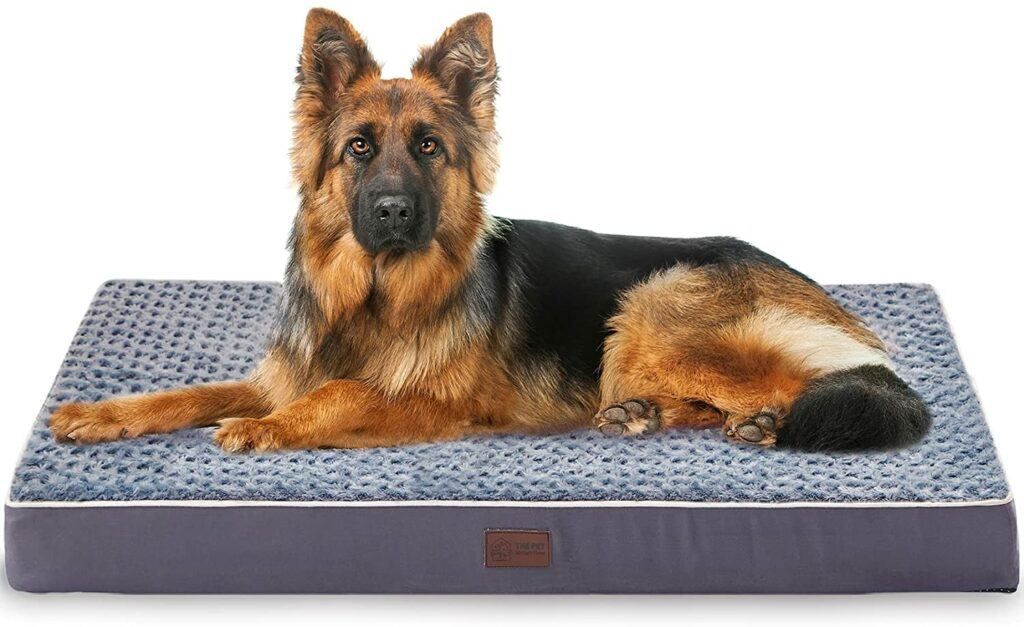
Your crate will come with a solid metal base. Some are raised off the floor on legs, and others sit directly on the floor but whichever you choose you will need to get a soft mat or mattress to put in it.
There are many different ones to choose from that are actually specifically made to fit different sizes of crates. At the cheaper end, you can get simple foam ones and at the more expensive end thick memory foam ones.
Whichever you choose make sure it is thick enough to give your dog adequate comfort. Lying on a hard surface can cause calluses as well as general discomfort. As a guide, I would recommend the thickness of a foam mattress to be no less than 2 inches.
If the crate mat is for a young puppy I would also recommend getting a waterproof one. Dogs don’t usually soil their beds but young puppies cannot hold themselves for as long. They are still developing their muscle control so there may be an odd accident that you will want to be able to clean up easily.
Where Should You Put A Dog Crate
You will also need to consider where you are going to put the crate. If you have never had one before I think you may be quite shocked by the size of it when you get it home. It will take up quite a bit of space so make sure you have planned for this.
It is also important that you make sure it is never left in direct sunlight near a window or anywhere that the sun can reach. Don’t place it near a radiator either.
Can I Put A Dog Crate In My Bedroom
Yes, you can put a dog crate in your bedroom. In fact, this is an ideal place as your dog will want to be with you. He or she will be much happier being able to hear and see you if they wake during the night.
How To Crate Train A German Shepherd In Just 4 Easy Steps

Now that you have everything set up it’s time to set about crate training your German Shepherd.
This can be done in just 4 easy steps.
- Introduce them to the crate
- Make the crate a happy place for them
- Close the door
- Start to leave your puppy for short periods at a time.
So let’s take a look at how we do each step one at a time.
Step 1 Introduce Your German Shepherd Puppy To their Crate
As soon as you bring the crate home or let your dog see it for the first time he or she will naturally want to investigate it. Let them have a good sniff at it whilst encouraging them that all is ok.
A word of warning that the doors on these crates can sometimes close unexpectedly so to ensure you don’t risk scaring your pup before you even get started I would get something to tie it back. Just keep the crate up and let your puppy go in and out of it by himself at first. You could also make it their only bed so that they see it from day one as the most comfortable place to rest.
Step 2 Make The Crate A Happy Place
If your puppy doesn’t seem to want to go in then try putting some toys in there. Put them within reach at first and as they seem to get a bit braver move it gradually further inside until it is at the back and your puppy is going in to get it. Try playing a game of fetch where you ask your puppy to go and collect the toy from inside the crate. You could also try giving some treats and feeding your puppy in there too. Above all give plenty of praise and encouragement when they go in there.
The aim here is to make any association with the crate a really pleasant one.
Step 3 Close The Door
Don’t be tempted to move on to this step too soon. You need to make sure they are happy inside the crate before you close the door. You don’t want to undo any work you have already done by making them feel trapped before they have become accustomed to it.
Gently close the door when they seem happy and settled inside and keep encouraging them. Also don’t move away at this stage the aim is to just get your puppy used to being in there with the door closed and feel ok with that for now.
Step 4 Move Away
Once you can see that your puppy is quite comfortable in the crate with the door closed you can start to leave them alone in it for short periods of time. Try just a few minutes at first and then gradually increase the length of time you leave them over a period of time.
The aim is for your puppy to understand they need to be patient as you know they are there and will be back soon.
How Long Can You Leave A German Shepherd In A Crate
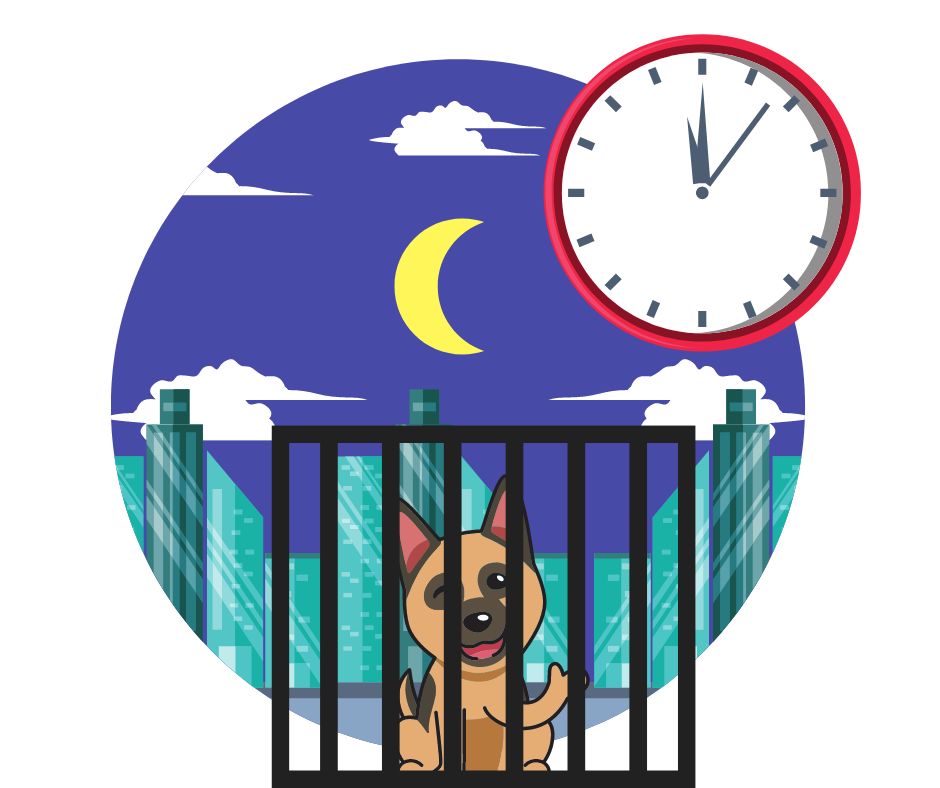
On average an adult German Shepherd Dog can cope with being in a crate overnight for about 8 hours before they will need the bathroom. Remember this is an average some dogs may not be able to cope for as long and it will depend on when they last went to the bathroom before you placed them in the crate too.
How Long Can A Puppy Be In A Crate At Night
A puppy will not be able to last any longer than 2 hours before it needs the bathroom if under 3 months of age. This time gradually increases by about an hour for every month of their life until they reach about 6 months old. They can then cope for about 6 hours at a time which will steadily increase as they mature over the next 18 months into adulthood.
Once again this is an average and some will not be able to go quite as long. This is also the time your dog can hold its bladder for not really how long you should crate them for. Dog crates are supposed to be for short term use only and not for any long term confinement.
Don’t Use The Crate As A Punishment
No dog should be placed in a crate as a punishment or left in it for hours at a time. Just as you wouldn’t like to be stuck in the confinement of a small vehicle for hours your dog is the same in his crate.
They need to be able to go to the bathroom, walk around and stretch their legs too. Not to mention the boredom that will set in if they are simply stuck in a crate for hours on end.
Remember that the main reason you are using a crate is for your puppy’s safety. That is to stop them from getting into trouble when you are not around or during the night.
Crates can be useful and your dog is also likely to see it as a comfortable place to go to but the only time you should ever close the door and confine them to it is to keep them safe and this should be for as little time as possible. The rest of the time your dog should be able to move around freely and get in and out of their crate as they please.
German Shepherd Crate Training Tips
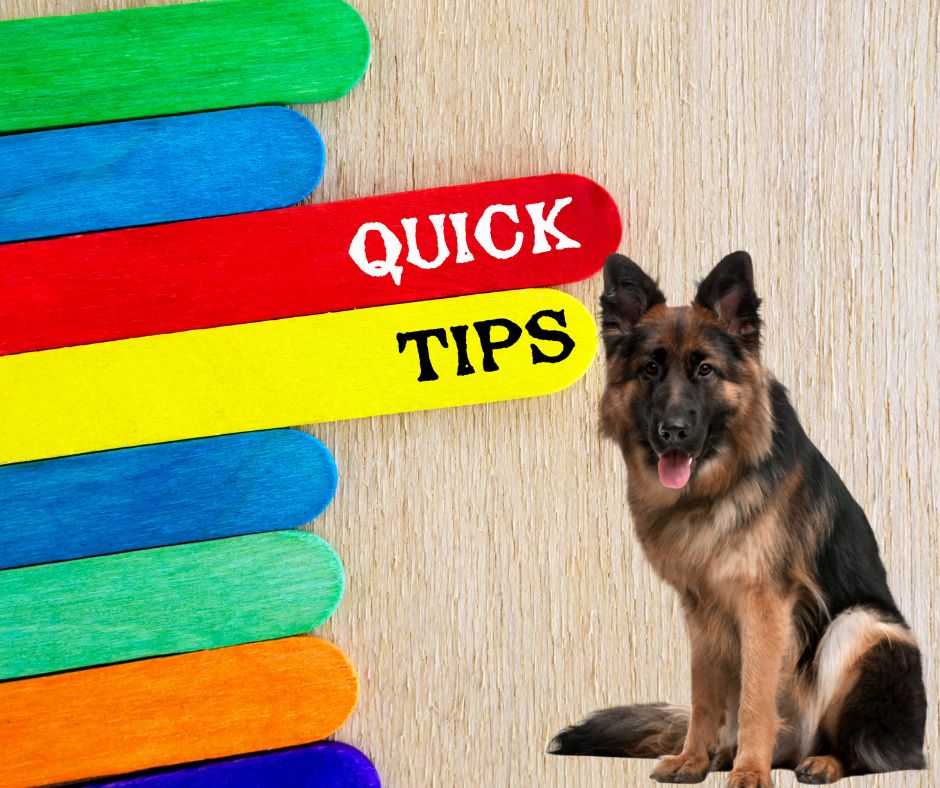
#1 Tip – Get a well-made crate
#2 Tip – Make sure it’s comfortable and inviting
#3 Tip – Make the experience fun, add some toys
#4 Tip – Feed them in the crate
#5Tip – Take things slowly
#6 Tip – Don’t go on to the next step until you are sure your puppy is happy with the previous one.
#7 Tip – Only shut the door for their safety not your convenience
#8 Tip – Don’t leave them locked in it for too long
Common Dog Crate Training Problems And What To Do About Them
| The Problem | What To Do |
|---|---|
| My dog won’t go in the crate | Your dog needs more time to get accustomed to the crate. Remember to make it a happy place. Try putting their favourite toy in there and playing a game of fetch. Also putting their food or treats in the crate can be helpful. The ma,in thing is not to rush your puppy. They will get used to it in their own time. Taking things too fast can lead to them becoming frightened. Just take it slowly and keep thngs positive whilst remembering to encourag and praise. |
| My dog keeps whining and crying when in the crate | You have probably gone to step 4 too quickly. Go to your puppy but don’t open the crate straight away. Wait until they are quiet and then open the crate. Then go back to step 2 giving as much encouragement and praise as you can. |
| My dog scratches to get out of the crate | This is also a sign that you may have gone to step 4 too quickly. As with whining or crying don’t reward the behaviour by opening the crate straight away. Tell you puppy no and wait until he stops scratching you can then open the crate and go back to Step 2. |
| My dog manages to escape | If your dog is managing to escape then you need to buy a strong crate. German Shepherd dogs can do Houdini very well if there is a weak spot to be found they will find it. |
| My dog is chewing their bed | This is probably boredom. German Shepherd Dogs need quite a lot of brain stimulation and can be quite destructive when they become bored. Try to make sure your dog has had plenty of exercise so that they are tired when put into the crate. |
| My dog keeps soiling the crate | This is a sign that your puppy has been left too long. On average young puppies will need to go potty every 2 hours but this is an average figure. This means that some puppies will not be able to last this long and as is the case with humans it will depend upon when we last ate and drank. Try to make sure your puppy keeps to a scheduled potty routine in particular they will need to go after a meal and before you put them to bed in the crate. |
Final Thoughts On German Shepherd Puppy Crate Training
German Shepherd Puppy crate training should be easy and simple because they should enjoy it. When they enjoy something they will do it without question. As is the case with any training you do with a German Shepherd Dog it has to be positive and fun.
They are not daft and will quickly realise if you are trying to con them. The crate should not be a scary place or something that they associate bad things with. This is why you should never use it as a punishment place or leave them for long periods of time that cause discomfort and distress.
If you follow the steps in this guide then your German Shepherd Puppy should be crate trained in no time. I hope you have found this article helpful and please do let me know how you get on in the comments below.
